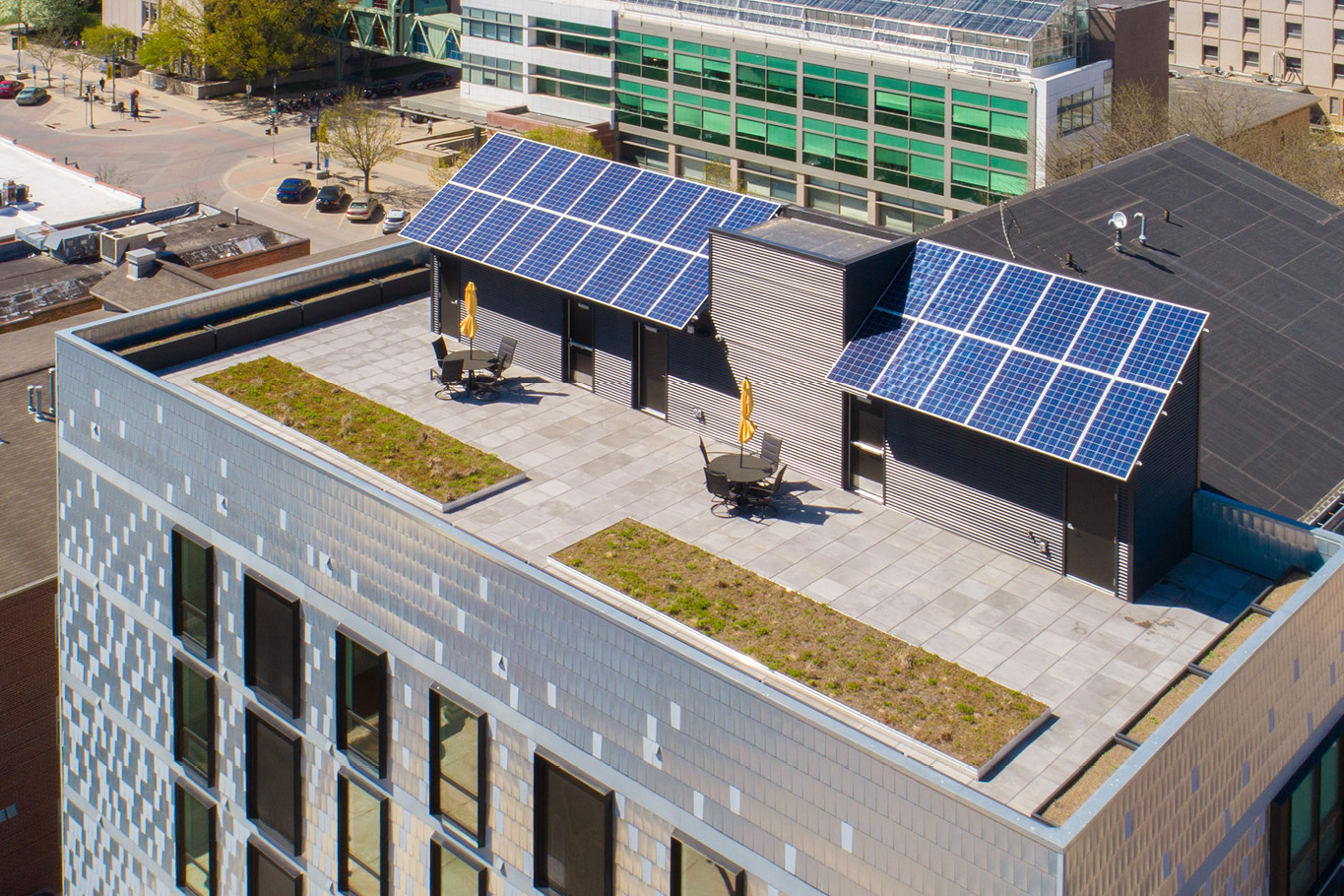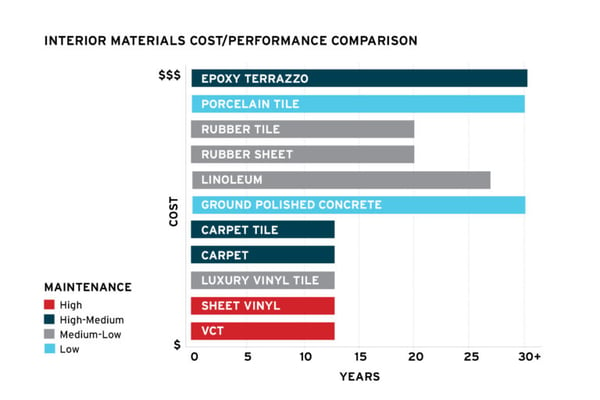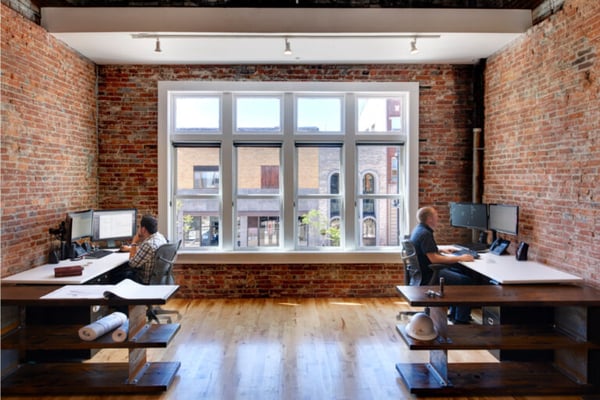Long-Term Costs to Consider When Starting a Building Project

The decisions you make in the design process can have a long-term financial impact.
We use life cycle cost analyses to help our clients balance the long-term costs of building ownership with their project’s budget. The goal is to help you get the most value from your project and help you save money in the long run.
To help you prepare for the design process, we are breaking down three types of long-term costs you should consider at the start of your building project:
- Equipment costs
- Material costs
- Personnel costs
After reading, you will better understand the types of costs you will encounter over a building’s lifetime, helping you determine your long-term priorities.
Defining Life Cycle Costs
In the world of architecture and construction, “life cycle costs” refer to the total cost of building ownership throughout its lifetime. Beyond construction and project costs, there are many costs associated with building ownership, including:
- Utility costs
- Maintenance costs
- Repair and replacement costs
- Personnel costs
Long-term costs often outweigh the initial cost of design and construction. A federal government study finds that design and construction only make up 2% of the total cost of building ownership over 30 years.
Thoughtful design can reduce some of the long-term costs you encounter. Investing in quality systems and materials can help your building operate more efficiently, saving you money over the building’s lifetime.
Three Types of Long-Term Costs
If you are wanting to reduce the long-term costs are building ownership, be sure to think about your long-term goals. For some, an efficient mechanical system and low utility costs may be the top priority. For others, low-maintenance, durable materials may take precedence.
Below, we’ll discuss each type of cost to help you determine which is the greatest priority for your project.
1. Equipment Costs
Your building’s equipment—including its mechanical and electrical systems—can have a long-term cost impact. Investing in high-quality, efficient systems can significantly reduce your energy consumption. Alternatively, less efficient systems can increase your utility costs.
Maintaining or replacing equipment can also be costly. Some systems have a longer lifespan than others, so it’s important to think about replacement costs during design.
Equipment costs will matter more to some building owners than others. For example, publicly funded projects like public schools or municipal buildings are often required to purchase the most efficient mechanical system. Although an efficient system has a higher initial cost, it saves taxpayers in the long run.
For some, long-term energy efficiency is a lower priority. If you are planning on selling the property before the system needs to be replaced, you may choose a less expensive option.
If you are considering this route, keep your property’s resale value in mind. A highly efficient mechanical or electrical system can improve your building’s value and attract potential buyers.
2. Material Costs
Material choices also have a long-term cost impact. Often, products with a higher initial cost have a lower life cycle cost. For example, triple glazed windows are more expensive than other options, but their thermal efficiency significantly reduces utility expenses.
When purchasing materials, consider long-term maintenance and replacement costs. For example, a flooring material like Vinyl Composite Tile (VCT) has a low initial cost but needs frequent maintenance, including waxing and restriping. VCT also needs to be replaced at least once every ten years.
Alternatively, terrazzo is low maintenance, highly durable, and can last over 40 years. Although it has a higher initial price, it has a much lower life cycle cost than VCT.
Durable flooring is vital in commercial buildings with ample foot traffic, like restaurants and retail spaces. For owners of these building types, a flooring material with a higher initial price tag is a wise investment.
For some, a material’s durability will be less important. Hospitality establishments like hotels change their décor frequently. If you plan to update your interiors within a few years, the life cycle cost of materials may be a lower priority. Instead, you might choose to invest in equipment.

A life cycle cost analysis of flooring materials.
3. Personnel Costs
Personnel is often a business owner’s greatest expense. That same federal government study found that personnel costs make up 92% of the cost of 30 years of building ownership.
The cost of absenteeism, turnover, and recruitment can have a major impact on your bottom line. Investing in quality design, however, can help mitigate these expenses. Studies show that providing occupants with daylight and views of nature can improve productivity and reduce the number of sick days.
These healthy building practices extend beyond the cost of employees. Daylighting and views are also known to improve students’ performance and improve recovery times in hospitals. In short, these healthy design practices can help you reach your long-term goals–providing a return on your investment.
Green building systems like LEED, WELL, and Living Building Challenge offer comprehensive frameworks to promote occupant wellbeing. However, these programs require upfront investments that need to be aligned with your budget. Be sure to talk to your architect about your options and determine how you can improve your occupants’ experience.

Daylighting and views can reduce absenteeism and improve productivity.
What Are Your Next Steps?
Long-term costs are an important component of any building project. Investing in high-quality equipment, durable and low-maintenance materials, and design practices that improve occupant wellbeing can keep long-term expenses low.
The constraints of your budget may not allow you to equally invest in every area. As you start the design process, think about your long-term goals, and determine your priorities.
A quality architect will lead you through this process and help you get the “most bang for your buck.” To learn how architects can help you set project goals, read our guides to programming studies and visioning workshops.
To learn how we work, contact us and set up an exploratory meeting with an architect.